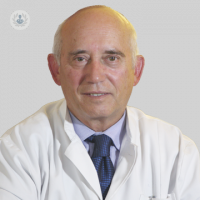Vasovasostomy, and restore fertility after a vasectomy
Written by:Is it possible to recover fertility after a vasectomy?
Between 2 and 4% of men who have undergone a vasectomy want to recover fertility for different reasons. It is usually by changing partners, usually a younger woman who has not had children, although there are other causes such as the death of children or psychological intolerance to vasectomy.. Faced with this demand, there are two possibilities; one is to perform in vitro fertilization - with sperm obtained from the testicle and microinjected into the couple's ovules - or the vasovasostomy, which consists, by means of microsurgical techniques, of reattaching the vas deferens.
What is the vas deferens?
The vas deferens is the second segment of the so-called seminal path through which sperm pass from the testicle to the urethra.
What men can benefit from a vasovasostomy?
The vasovasostomy can also be performed in cases where the vas deferens has been blocked or has been sectioned, for example in childhood or in the course of an inguinal hernia surgery.. But most often, the desire for fertility after having a vasectomy. In these situations we must imagine that, as we mentioned, a young woman who has not had children would seem more logical that the man who underwent a vasectomy undergo this surgery to reattach the vas deferens, which is relatively simple. In these cases, if the surgery has a good result, one or more pregnancies are obtained by natural means without the woman being involved in the process, as in the case of in vitro fertilization.
How is this surgery done?
The vasovasostomy can be performed under local or general anesthesia through a small incision in the root of the testicle sac, the scrotum. Both vas deferens are externalized, the obstructed segment is sectioned and the two healthy ends of the conduit are connected.. This is a surgery that lasts between an hour and a half and two hours. The post-operative is very well tolerated and the only precaution to be taken is not to maintain sexual activity until after approximately one month. The points fall alone at this time and 3 months after surgery the first analysis of semen is performed to check whether or not there are sperm and what is the quality of them. The results of this surgery are the presence of sperm, between 70-90% of cases and pregnancies between 40-60%.
There are men who decide to freeze semen during vasovasostomy. To what is it due and to what extent is it advisable?
If during surgery we find sperm at the end of the vas that comes from the testicle in principle, performing the splice - the anastomosis - we have a high percentage of sperm appearing practically in the first semengram performed at three months. Sometimes, in certain circumstances and if the patient wishes it, it is always possible - in the case of finding mobile sperm, because, if not, it does not make much sense - to freeze them for future use with in vitro fertilization techniques, in the case that the surgery did not finish giving the expected result.



